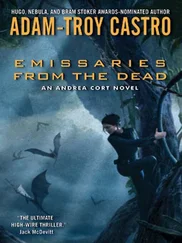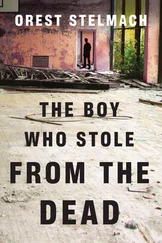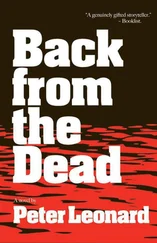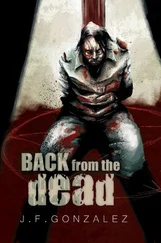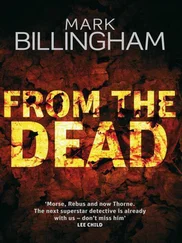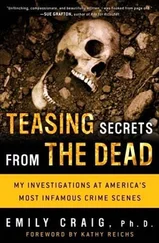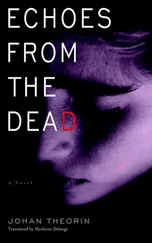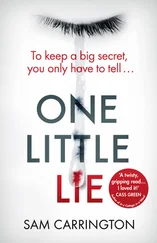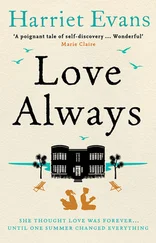When I finally got to the crime scene, I felt as though I'd entered the twilight zone. There was none of the banter, the easy camaraderie that death scene investigators rely upon to help us cope with our morbid tasks. Instead, we were all in shock-partly because of the horror that always overtakes a death scene when a child is involved, partly because of the larger tragedy that none of us knew how to process. I felt as though we were all going in slow motion, and I was amazed, the first time I checked my watch, to see that, in fact, we were proceeding at normal speed.
I'd called in forensic specialists from halfway across the state to meet me at the crime scene, and as they arrived they would each try to describe the devastation they had watched on television that morning. But even those who had seen the footage with their own eyes had a hard time believing what had actually happened. Each person who arrived brought further news. The nation's airports had been shut down. Terrorists had attacked the Pentagon. A plane had gone down in Pennsylvania. The president had been whisked into hiding.
Here in the woods, an eerie quiet surrounded us. Because all aircraft had been grounded, there was none of the usual noise from planes flying in and out of the nearby airport. Even the police radios-usually crackling nonstop at a crime scene-were silent, since everyone had been ordered to keep the airwaves free for emergency communications. One of the deputies would periodically drive to where he could get a phone signal, call his dispatcher, and bring back additional bits of news.
I tried to imagine the falling buildings, the thousands of lives snuffed out. I had never even seen the Twin Towers in person, but my mind returned obsessively to the scene again and again.
When I finally got back to my lab in Frankfort, I found my voice mailbox full of messages and my e-mail crammed with urgent requests from DMORT. But when I called the regional commander, it was just as I'd feared. They'd wanted to send me, but they'd had to move on. They would surely be calling me later, the commander told me-but, for now, they had all the help they needed.
Back at home, in front of the television, I felt a wave of dread. Now that I could actually see the Twin Towers come down, I understood from experience something that many others didn't realize right away-there would be almost no survivors. And the remains of the victims would be mangled almost beyond recognition, mixed in with steel and concrete and rubble. As at Waco and Oklahoma City, but on a much larger scale, the recovery effort would involve pulling shredded body parts out of a mass of debris and then somehow trying to identify the remains as part of a leg, a shoulder muscle, a kidney. It was just the kind of work I'd been doing for the past ten years, and I knew that very few other people would be willing or able to do it. Because of my odd, checkered career-all the time I'd spent dissecting remains at the Hughston Clinic; the months of memorizing bone fragments at the University of Tennessee at Knoxville; and the many fires, explosions, plane crashes, and homicidal dismemberment cases I'd worked in Kentucky-I had somehow put together precisely the combination of skills that would be useful in a situation like this.
I settled down to watch yet another replay of that morning's horrifying disaster. Whether or not I was part of the first response team didn't matter anymore. Sooner or later, I knew, I'd be going.

The first few days following the attacks are a blur. As I tried to keep up with events in New York, we identified the teenaged homicide victim from Bowling Green and managed to determine the cause of her death. I did my best to finish up the rest of my active cases so that when DMORT called for reinforcements I'd be ready. As I'd suspected, all three disaster sites were soon flooded with volunteers; but, with the airports shut down, even DMORT had great difficulty getting enough workers to the New York and Pennsylvania sites (the damage to the Pentagon came under the jurisdiction of the military and other federal agencies). Nevertheless, the logistics were still an enormous challenge. DMORT command had even sent some people to military bases, with instructions to travel by military transport. Those volunteers waited endless hours in cold hangars, spending the night on cots-only to learn that military resources were needed elsewhere and they'd have to drive for two days to get to their destinations.
DMORT was fearful, too, of putting a huge percentage of the nation's forensic experts in one place. What if our entire team of forensic experts, mortuary specialists, and medical death investigators were all sent to New York and then someone blew up their hotel or staged another attack in the recovery area? And what would happen if there were then new attacks in other cities?
Neither DMORT nor any other U.S. agency had ever dealt with a disaster of this magnitude. Before DMORT came on the scene, only two agencies dealt with mass disasters-incidents in which the number of dead is beyond the resources of a local community. The Federal Emergency Management Agency (FEMA) supervised rescue and recovery operations during earthquakes, floods, hurricanes, and tornados, while the National Transportation Safety Board (NTSB) responded to train wrecks, airplane crashes, and other transportation-related incidents.
These agencies did admirable work, but there were some gaps in the services they provided to the families of the deceased. DMORT evolved as a way of supporting those who had lost loved ones in mass-fatality incidents, making sure they got the information they needed and providing them with social services. Gradually, the agency began to add other forensic specialists to their team of funeral directors and mortuary experts, including medical personnel; forensic anthropologists, pathologists, and odontologists; fingerprint specialists; dental and x-ray technicians; and DNA analysts-resources drawn from all over the country to supplement the personnel available in any one location. Likewise, DMORT recruited such skilled workers as heavy-equipment operators, security specialists, photographers, and investigators, as well as administrative support staff, computer specialists, and the like.
Eventually, a protocol developed for integrating DMORT into disaster relief. The first step, obviously, is always to deal with the living casualties. When the Federal Building went down in Oklahoma City, rescue workers were pulling survivors out of the wreckage for days. Emergency disaster relief focused on bringing additional doctors, nurses, and medical personnel-anyone who could deal with the needs of the wounded.
Once the living are taken care of, attention can be paid to the dead. The second wave of disaster personnel is the forensic specialists who can perform autopsies on corpses, match their recovered teeth to dental records, compare fingerprints, and analyze fragmented body parts and bone shards. That's usually where I come in-sometimes days or even weeks after the initial disaster.

On the evening of September 22, I finally got the call. DMORT wanted me to fly out the next morning and report to their New York City headquarters in the LaGuardia Marriott, a large hotel near New York 's LaGuardia Airport. The authorities had first planned to set up morgue operations in an airplane hangar there, so DMORT chose a nearby location to house their staff. When that plan changed, we all moved to a midtown hotel, about a week later; but meanwhile, here I was, walking into a lobby that seemed so deserted I wondered if I had come to the wrong place.
It seemed that the hotel had moved all of its regular guests to other quarters so that DMORT could commandeer almost the entire facility. The hotel staff was basically serving only rescue workers, and they approached me with a subdued readiness to help that I think they saw as their contribution to the recovery effort.
Читать дальше



